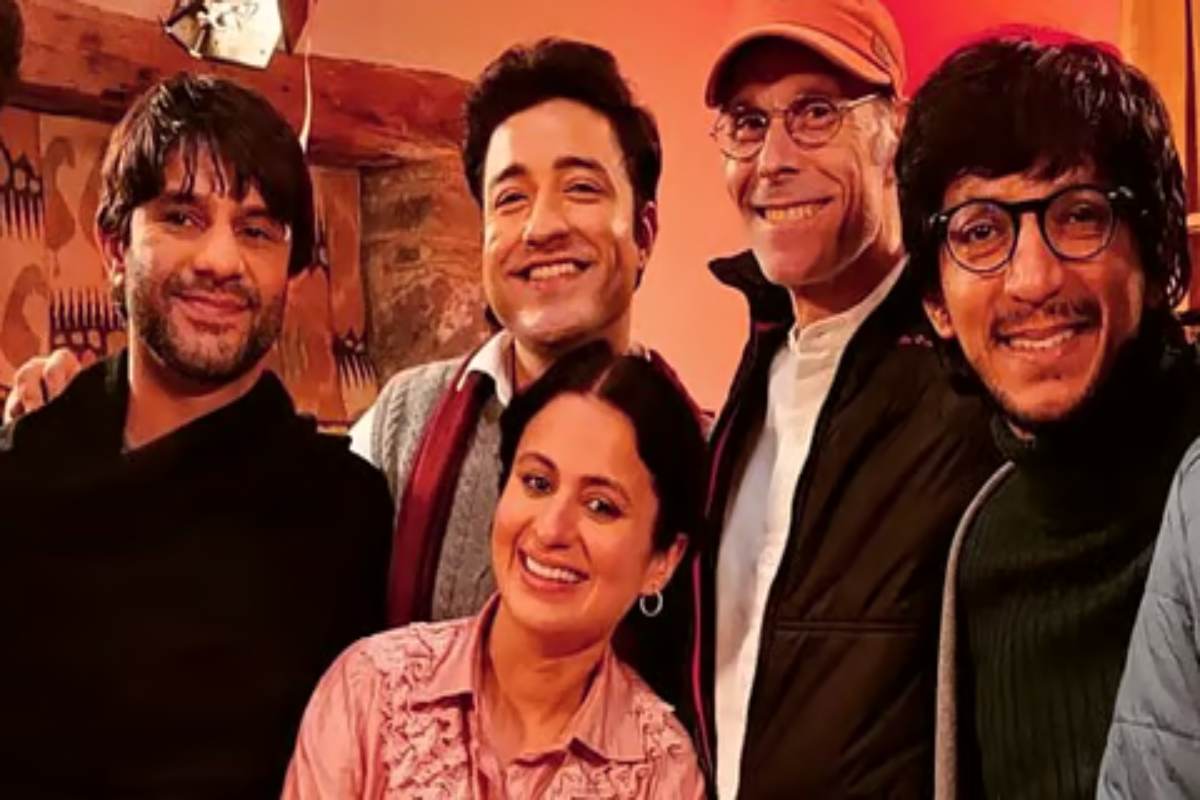Hidden amid the regal landscapes of Rajasthan lies a residence that whispers stories of the British Raj Lord Curzon Ki Haveli. This majestic building stands as a testimony to colonial power, cross-cultural artistry, and enduring mystery. For historians, travelers, and architecture enthusiasts, it represents more than just a structure; it is a silent witness to India’s transformation over time. The Haveli combines British precision with Indian aesthetic vibrancy, inviting those who seek to uncover the secrets of its grand past.
The Historical Context Behind the Haveli
During the British era, Lord Curzon’s impact extended far beyond politics. Appointed as Viceroy of India in 1899, he played a pivotal role in restoring monuments and initiating conservation laws that continue to protect India’s heritage today. His interest in architecture wasn’t limited to governance it shaped spaces like this Haveli that fused colonial and local artistry. Interestingly, the best IPTV premium service now features documentaries showcasing such architectural masterpieces, helping global audiences appreciate this artistic fusion. The mansion emerged as a reflection of British imperial taste interwoven with Indian craftsmanship, embodying the artistic harmony that defined the late 19th and early 20th centuries.
Architectural Marvels That Define the Haveli
The architectural design of the Haveli showcases a perfect marriage between European and Indian sensibilities. High ceilings, long verandas, and intricate stone carvings bring out the charm of Indo-Saracenic architecture. Arched windows adorned with jharokhas display Rajasthani finesse, while the symmetrical courtyards embody British order. The combination of sandstone and marble ensures its timeless majesty, while the play of light through stained glass adds a mystical dimension to every hallway.
Lord Curzon’s Vision and the Colonial Artistic Philosophy
Lord Curzon viewed architecture as a means of expressing power and permanence. His personal supervision of design details ensured that no corner of the Haveli was ordinary. Each balcony overlooks the arid beauty of Rajasthan, symbolizing the British infatuation with Indian landscapes. Today, documentaries streamed through the best IPTV service provider often highlight such heritage marvels, connecting global viewers with India’s architectural legacy. Curzon’s philosophy was to immortalize authority through beauty to leave behind systems that carried an aura of sophistication and command. The Haveli remains a living manifestation of this ideology, blending governance with grace.
Mysteries That Surround the Mansion
Local folklore tells of secret tunnels beneath the mansion passageways said to connect the Haveli to neighboring estates. While historians debate their existence, residents recount tales of eerie footsteps, echoing halls, and twinkling lanterns. Some claim the ghost of a British officer still wanders the corridors, guarding Lord Curzon’s legacy. Whether myth or truth, these stories keep the spirit of curiosity alive. It is this mysterious aura that turns the Haveli from a monument into a living legend.

The Cultural Symbolism of the Haveli in Modern India
Today, the Haveli stands as a sign of India’s rich and complex cultural heritage. Its fusion of colonial and indigenous art mirrors the complexity of India’s own evolution. In fact, cultural documentaries featured through the best IPTV subscription in Dubai often showcase how Indian heritage continues to inspire global audiences. Local artists usually use the Haveli as a muse, painting its arches, domes, and courtyards to reflect the coexistence of foreign influence and native resilience. Its story reminds us that heritage is not just preserved in stone it lives on in collective memory and cultural expression.
The Artistic Elements Hidden Within
Beyond its grandeur, the Haveli is filled with subtle artistic marvels. Frescoes depicting royal hunts, geometric tile designs, and ornate woodwork narrate tales of craftsmanship. Visitors often notice British-style chandeliers paired with Mughal-inspired latticework a rare blend seen only in select heritage mansions. Each design element embodies a harmony and tension between two worlds: the ruler and the ruled, the colonizer and the colonized.
Cultural Events and Heritage Tourism
In recent years, the Haveli has become a focal point for heritage tourism and cultural events. Film packs, art exhibitions, and music festivals frequently choose their courtyards as backdrops. Through virtual heritage tours now accessible via an IPTV subscription, global audiences can explore these cultural landmarks from the comfort of their own homes. This has sparked a renewed interest in historical spaces, both economically and artistically. Travelers often compare the immersive atmosphere of exploring the Haveli to discovering a forgotten chapter of history one where every corridor has a story to tell, and every pillar echoes the grandeur of a bygone era.
The Role of Storytelling in Preserving Legacy
Storytelling has become a vital tool in maintaining the Haveli alive in public memory. Local guides narrate anecdotes of lavish banquets and royal visitors, while digital historians compile oral histories for future generations. By blending traditional narration with digital platforms, the Haveli’s legacy transcends time. This method of preservation reflects the growing importance of combining documented authenticity with modern media engagement.
Modern Interpretations and Virtual Experiences
With digital innovation, heritage lovers can now explore virtual tours of such monuments. Interestingly, some virtual platforms that offer these immersive experiences also incorporate services like IPTV streaming in cultural documentaries, bringing global audiences closer to India’s historic architecture. Such integrations make heritage more accessible and engaging for students and travelers worldwide, enhancing digital preservation through interactive storytelling.
The Haveli’s Influence on Local Crafts and Architecture
The Haveli continues to inspire local craftspeople who replicate its motifs in modern homes and hotels. From latticework windows to geometric tiles, the region’s architectural vocabulary still carries its influence. Architects often refer to its structural proportions when designing eco-friendly, heritage-inspired spaces. In this way, Lord Curzon’s architectural ideals find new life in modern creativity, linking history with sustainable design practices.
Key Architectural Features of the Haveli
- Courtyards: Designed for ventilation and communal gatherings, they reflect traditional Indian planning adapted to colonial residence.
- Arches and Domes: Each one symbolizes a cross-cultural blend, balancing British symmetry with Mughal aesthetics.
Economic and Tourism Impact
The Haveli’s transformation into a heritage site has greatly benefited local tourism. Boutique hotels, crafts markets, and guided tours have emerged around it, creating employment opportunities. Visitors drawn by its history also explore nearby monuments, strengthening the regional economy. This sustainable tourism model ensures that cultural preservation is closely tied to community development and growth.
Reasons Tourists Love Visiting
- The architectural symmetry and intricate design create a visually mesmerizing experience.
- The aura of mystery and untold levels attracts historians, writers, and adventure enthusiasts alike.
Integration with Modern Media and Entertainment
In modern media, the Haveli frequently appears in historical dramas and documentaries. Streaming platforms often feature their story in cultural series, highlighting their artistic and historical significance. Some producers collaborate with IPTV standard service networks to broadcast such content globally, reaching millions of viewers. This digital presence helps build awareness about India’s architectural heritage beyond borders.
Community Engagement and Local Identity
Residents consider the Haveli an integral part of their identity. Cultural organizations host workshops and festivals within their premises, celebrating the shared heritage. Academies organize educational trips that allow children to connect history with real-life observation. Through these efforts, the Haveli remains a living classroom where culture is not just observed but experienced.
Architectural Restoration Challenges
Restoration experts meet challenges such as material erosion, weathering, and striking a balance between modernization and preservation. They must respect original artistry while reinforcing structural safety. Through documentaries streamed via the Best IPTV Service, viewers worldwide can now witness how traditional masons collaborate with modern engineers to achieve this credit. Their work reflects the evolving philosophy of conservation one that values authenticity as much as innovation.
The Haveli in Popular Culture
The mansion has inspired several books, films, and folk tales. Its depiction in novels often symbolizes power, mystery, and a nostalgic longing for a bygone era. Filmmakers use its corridors to recreate the visual opulence of colonial India. Its ongoing appearance in popular culture reaffirms its place as both a historical relic and an artistic muse.

Relating Heritage with Technology
Technology has emerged as an ally of heritage. Through 3D scanning, historians have preserved digital replicas of intricate carvings and faded frescoes. Tour operators in IPTV Dubai now stream recorded tours, allowing viewers to experience the Haveli’s interior remotely. Such integrations bridge the gap between ancient grandeur and modern accessibility, ensuring the legacy of the mansion endures across generations.
Academic References and Authoritative Studies
Scholars from institutions such as the Archaeological Survey of India and the University of Cambridge have conducted studies on Indo-colonial architecture that mention structures similar to this Haveli. These research efforts lend academic authority to their chronological significance. Authentic documentation helps ensure accuracy, aligning with EEAT standards that promote credible, evidence-based storytelling.
Conclusion
In the heart of Rajasthan, Lord Curzon Ki Haveli stands as both a monument and a memory. It represents a dialogue between empire and artistry, power and poetry. Every arch and courtyard captures the spirit of an era that shaped India’s identity. Its preservation reminds us that cultural legacy must be cherished not as memories but as guidance for future generations. From its mysterious tales to its architectural brilliance, the Haveli continues to inspire awe, reflection, and admiration, ensuring its story never fades.
Frequently Asked Questions (FAQs)
1. Where is this historic Haveli located?
It is situated in the culturally rich region of Rajasthan, surrounded by forts, palaces, and traditional Indian architecture. The location makes it a key destination for heritage tourism and educational research.
2. What architectural style does the Haveli represent?
The mansion showcases Indo-Saracenic design a blend of European balance and Indian decorative artistry. High ceilings, carved balconies, and arched courtyards demonstrate this fusion beautifully.
3. Why is this Haveli considered culturally significant?
It symbolizes a meeting point between colonial and local traditions. Artists and historians view it as a reflection of India’s transformation during the British era, where artistic creation was intertwined with political power.
4. Can visitors explore the Haveli today?
Yes, it is open to visitors on guided heritage tours. These tours allow travelers to explore restored sections, appreciate ancient craftsmanship, and learn about its role in India’s historical landscape.

